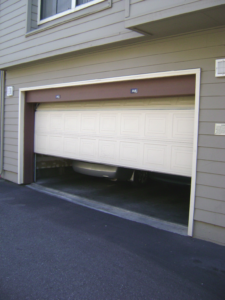The fascinating, complex world of Catering is a food and beverage industry where culinary skills, event planning, customer service, and business savvy mingle. Let’s take a ride on this scenic, delicious route together.
Something brought: Knock a few things off the to-do list for your next dinner party by asking guests to get drinks, bread, or dessert. Click the Catering In Chandler AZ to learn more.

Corporate Catering involves arranging meals for employees of a company regularly or as part of a specific event, such as a training session or company-wide meeting. The services of a corporate caterer are typically arranged on a per-person basis, with the cost including both food and service charges. Many catering companies specialize in corporate dining, while others offer these services as a part of their full range of offerings.
The benefits of corporate Catering include the ability to improve productivity by allowing workers to stay at work instead of leaving to get lunch or dinner. Having a catered meal available on-site also helps to foster a positive and professional atmosphere during meetings and other events. In addition, corporate Catering can help to save money by eliminating the need for employees to dine out or buy food from a cafeteria or restaurant.
Another benefit of corporate Catering is the ability to provide a wide variety of foods and options. Some caterers may even be able to accommodate specific dietary needs and preferences. In addition, a professional catering company can provide a number of different serving styles, from serve-yourself buffets to plated meals and boxed lunches. Moreover, a catering company can even bring in a food truck or set up a “popup restaurant” at a location to give the feel of dining out without the need for employees to leave the workplace.
Finally, a professional catering company can also help to streamline the planning process by handling all aspects of food preparation and delivery. This can reduce stress and allow organizers to focus on other aspects of the event. This is especially helpful if the event is planned on short notice or if there are other time constraints.
Wedding Catering
Weddings are one of the most popular events for Catering. As a result, the prices for this type of event can be higher than other events like corporate luncheons and bar mitzvahs. The pricing varies depending on the venue, food choice, and the number of guests. A more diverse menu and a larger guest count will increase the cost.
The service style also affects the cost. Plated meals require more work than buffets and family-style dining. Additionally, dishes that are more expensive to make will add to the final bill, such as oysters and caviar.
When you are deciding on a venue for your wedding, ask about the food experience and whether they have an exclusive caterer or if they will allow outside vendors. This will give you a good idea of the overall pricing for your day.
Some venues have in-house Catering from their restaurant and this may be more affordable than hiring a separate caterer. If the venue has this option, consider doing a tasting during your site visit to see what you think of the cuisine.
A buffet is an affordable and laid back service style that is great for large numbers of people. This option is set up with serving dishes in large warming stations that are lined up on one or several long tables. Guests will line up, and servers will put proper portions on their plates. Food stations are similar to a buffet but offer more freedom and variety. They are separated into different tables that each offers a unique selection under a specific category, such as appetizers or meats.
In addition to food, your catering package should include the furnishing you will need for your event, such as tables, chairs, plates, service ware, glasses, etc. Ask your vendor if they provide linens as well and what types of colors and textures are available.
Bar/Bat Mitzvah Catering
A Bar or Bat Mitzvah marks a special coming-of-age moment for your son or daughter, and it’s an important milestone that requires a truly celebratory event. Your guests are likely to come from near and far, so providing a variety of dishes that appeal to many different tastes is essential. Working with a professional caterer is the best way to make sure your event’s meal planning reflects your family’s preferences and the latest food trends.
Keeping in line with religious practices, it’s common to include kosher food options on your menu. Depending on the scale of your celebration, this may mean a buffet or a sit-down dinner with multiple courses. For smaller events, you can set up interactive food stations, such as a build-your-own taco or pizza station or a sushi-rolling bar. This is a great way to provide your guests with a memorable experience while keeping to your family’s traditions.
As you prepare to host your child’s special day, you’ll need to make sure you include plenty of dessert choices. You can go with a classic selection of cookies and cupcakes or opt for a more indulgent spread featuring treats like babka and kugelhopf cake. You should also serve a selection of drinks, including water and soft beverages.
With a little thought, you can create the perfect beverage setup for your event, making it easy for guests to grab and go. Grazing boards have gained popularity in recent years, and you can create a stylish one for your celebration with a range of delicious bites. While traditional charcuterie platters are typically made with pork-based products, you can opt for a vegetarian version or include other options, such as smoked salmon and lox.
Birthday Catering
Whether you’re planning a pinata-hanging birthday bash for your child or a sophisticated soiree for a debutante, the right catering choices will make your special event one to remember. Choosing the best caterer, creating an efficient budget and establishing clear lines of communication with your caterer are vital for a seamless, stress-free catering experience.
When it comes to social events like birthday parties, the caterer can add a personalized touch that makes the guest of honor feel celebrated and recognized for who they are. Personalization can include signature dishes that are tailored to the person’s tastes, custom cocktails named after them, or a menu that reflects their favorite cuisine. Adding these personalized touches shows the catered food is thoughtfully chosen, and they are an extension of the party theme and ambiance.
Birthday party catering should balance sweet and savory flavors as well as provide something for every palate. For example, a brunch-themed party can offer options like savory quiches and assorted pastries in addition to fresh fruit platters. Alternatively, you can go all out and include a custom omelet bar or gourmet pancake station.
Full-service Catering typically includes menu planning, food preparation and service, setup and cleanup as well as sometimes the rental of furnishings like tables and chairs. Choosing a caterer that offers these services will reduce the time and hassle of preparing and serving food.
Tightly evaluating your catering budget and establishing clear lines of communication with the caterer are critical for a successful NYC birthday party. Selecting the ideal caterer, ensuring the venue is large enough to accommodate your guests, and keeping a close eye on your catering budget are all crucial for a flawless birthday party.
Holiday Catering
The holidays are a time for family gatherings, office celebrations and other events that bring people together. This makes it a perfect opportunity to boost your restaurant’s catering revenue. By launching a holiday catering menu and offering seasonal packages, you can attract customers and generate loyal repeat business.
A well-planned holiday catering menu can include crowd-pleasers like charcuterie boards, mini desserts and finger foods. You can also offer seasonal drinks that complement the food, such as mulled wine, spiced cider or specialty cocktails. These drinks can help elevate the dining experience and add a festive feel to the party.
During the holidays, guests typically have looser budgets than on a typical day, making them more willing to spend money on additional add-ons. This is an ideal time to offer additional beverage options, dessert platters, or takeaway gifts (cookie favors, for example). In addition to boosting check averages, these extras can help build loyalty with your catering guests and encourage repeat orders in the future.
Leverage social media and your website to promote your new holiday catering offerings. Create high-quality posts that showcase your catering menu and highlight mouthwatering images. Consider leveraging a holiday-themed hashtag or running a giveaway to increase engagement. Additionally, be sure to notify your catering loyalists via email. Personalize these messages to cater to the needs and preferences of each customer segment.
As the holiday season gets underway, many restaurants will require additional staff to handle the surge in catering volume. Look for opportunities to partner with local vendors that can help streamline operations and logistics. For example, collaborating with local farms and rental companies can provide quick access to fresh ingredients, serving ware, and decorations. This can save valuable time, limit hassle, and ensure a safe and efficient catering operation.








